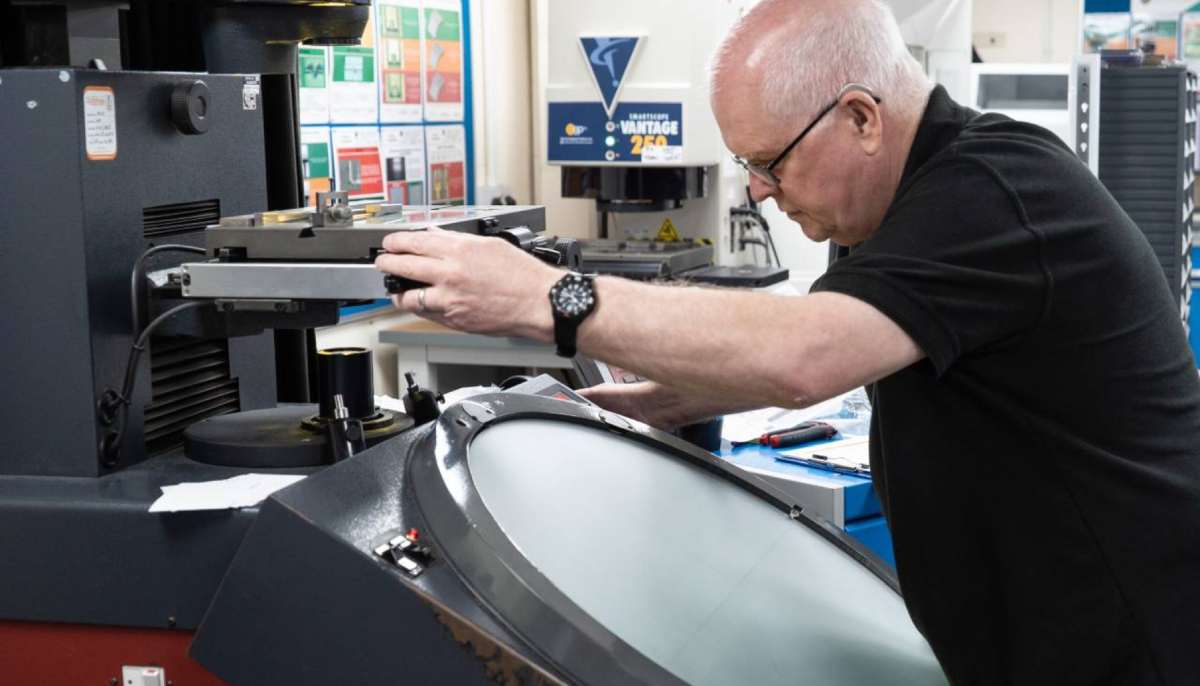Achieving reliability in metal stamping is a complex challenge that industry leaders tackle through a combination of best practices, technological innovation, and continuous improvement.
But what are the exact strategies employed by these leaders – and what do these insights tell us about stamping reliability today?
To help us find out, innovators at Batten & Allen have offered their view of what it takes to ensure stamping reliability at the highest level…
The Critical Combination of Precision Equipment & Skilled Workforce
Ian Mackinnon, Chief Executive at Batten & Allen, states:
“Two things are key to ensuring stamping reliability - a combination of the state-of-the-art precision equipment and a highly skilled workforce.
The majority of our engineers began as time served apprentices, trained both in further education and also on the job, which makes a huge difference to the ongoing skill level at the company.
This mixed with continued investment in leading-edge precision presses and tool room equipment allow us to maintain the stamping reliability our customers depend on.”
Terry Brisland, Senior Technical Sales Manager at Batten & Allen, further explains that “without a committed workforce who share in the ethos of the company, equipment is simply a depreciating asset. Only with the drive and teamwork of those that have the vision to utilise the tools we invest in, can that equipment contribute to the team as a whole.”
Emphasising Quality & Reliability from the Start
Industry pacesetters agree that the foundation of stamping reliability lies in emphasising quality right from the material selection stage.
Choosing the right materials - considering factors like strength, ductility, and compatibility with the intended application - sets the stage for reliable outcomes. This approach extends to tool and die design, where precision engineering ensures that these critical components can consistently produce defect-free parts.
“Tool design, tool manufacture and precision fitting and press setting are essential when trying to achieve extremely high-speed production and micron tolerance reliability,” insists Ian Mackinnon.
Investing in Advanced Technology and Automation for Quality Control
As addressed earlier, technological advancements play a pivotal role in enhancing stamping reliability - and this extends itself to quality control.
Leaders in the field invest in state-of-the-art equipment, including high-precision stamping presses and automated handling systems, to maintain consistent quality. Automation not only boosts efficiency but also reduces the likelihood of human error, a key factor in achieving reliability.
This involves regular inspections, using advanced measurement and imaging techniques, and rigorous testing of stamped components to ensure they meet all specifications.
Implementing statistical process control (SPC) methods, for example, allows for real-time monitoring and adjustment of the stamping process, further enhancing reliability.
Terry Brisland explains “I was once told that you cannot ‘inspect quality into a process’. What that means is that the long-term aim for any process is to ensure that quality is in-built, and defect free parts are ensured by the process itself. The aim should always be to achieve 100% defect free parts by design.”
Lean Manufacturing and Continuous Improvement
Lean manufacturing principles are integral to the pursuit of stamping reliability. By minimising waste and optimising processes, industry leaders can focus on value-adding activities that directly impact product quality.
Continuous improvement, driven by regular process reviews and employee feedback, ensures that stamping operations remain agile and responsive to any challenges.
“Continuous improvement is not an aim, or an exercise, it is an ethos,” says Terry Brisland. “We cannot turn it on or off. This is how we must conduct our ourselves every day, striving to adapt and learn, to be the best that we can be.”
Customising Solutions for Diverse Industries
Understanding the unique requirements of different industries is key to stamping reliability.
Industry innovators tailor their processes to meet specific standards and expectations - whether it's the precision required in electronics, or the durability demanded in automotive applications. This customisation extends to adapting quality control measures to suit the particular needs of each sector.
Terry Brisland stresses that “the ability to be adaptable, flexible, and understanding towards customers rapidly developing needs is key to maintaining a reliable supply chain in today’s markets. Open communication channels, and the strongly held belief that we are an extension of our customers own business, means that we understand our customer’s needs, and are always looking forward to ensure we meet these needs not just now, but sustainably for years to come.”
Collaboration and Partnership
Collaboration with clients and suppliers is another best practice observed among industry leaders.
By working closely with clients, they can understand specific needs and challenges, allowing for the development of customised solutions. Furthermore, strong partnerships with suppliers ensure a steady supply of high-quality materials, essential for consistent stamping outcomes.
As a Technical Sales Engineer, Terry Brisland knows just how important it is to spend time with customers, understanding their goals, procedures, and process streams.
“The time spent with customers is paid forward many times over, helping customers to improve yields and increase profitability,” says Terry.
David Merchant, Sales Director at Batten & Allen, further adds that “a supplier who acts as a partner will listen to customer needs, not just customer wants - and who knows that tomorrow’s standards will not be good enough in 5 years’ time.”
The best practices in stamping reliability, as demonstrated by industry leaders at Batten & Allen, encompass a holistic approach that integrates advanced technology, stringent quality control, skilled workforce, and continuous improvement.
These practices are not static but evolve with technological advancements and changing market demands. By adhering to these principles, companies in the metal stamping industry can achieve the high levels of reliability and quality that are essential for success in today's competitive marketplace.


